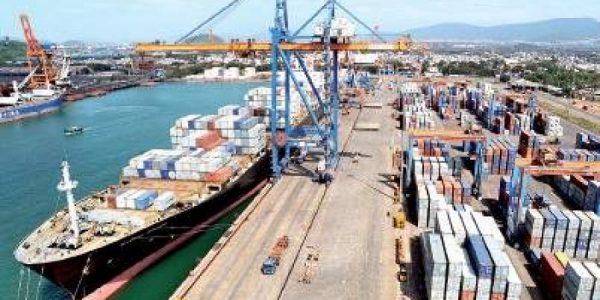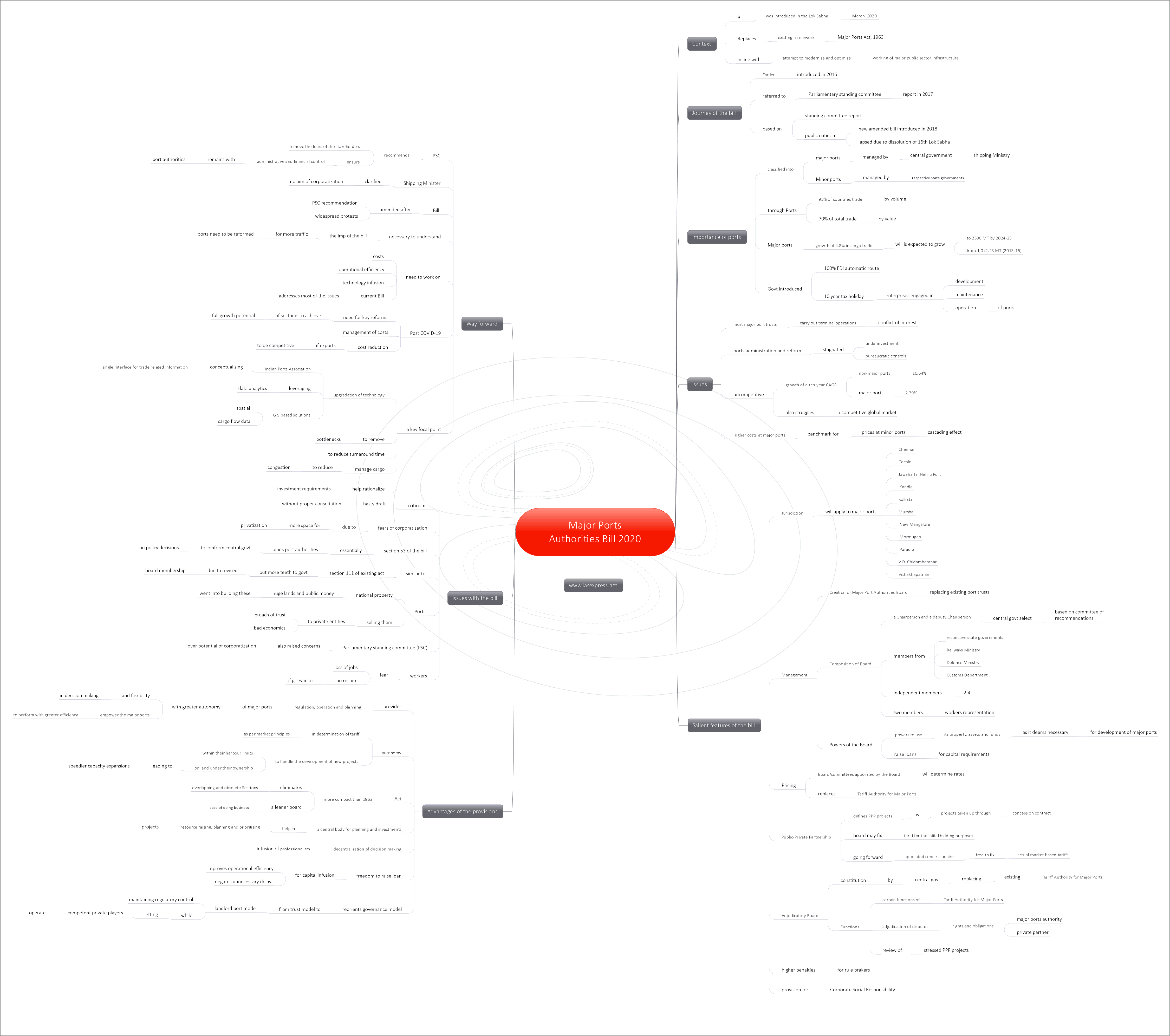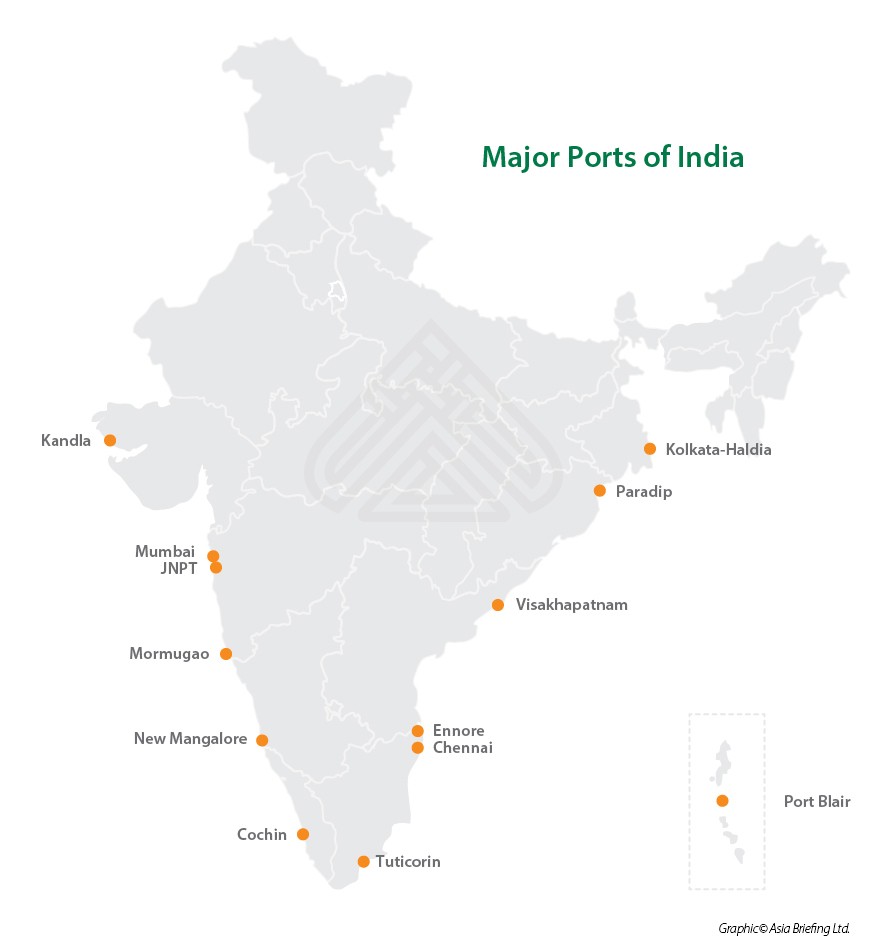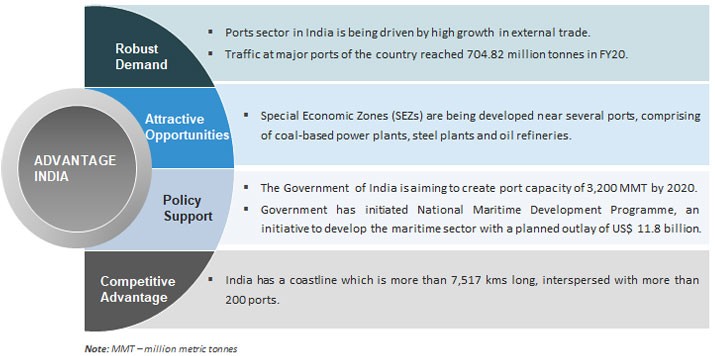Major Ports Authorities Bill, 2020: salient features, issues, advantages

From Current Affairs Notes for UPSC » Editorials & In-depths » This topic
IAS EXPRESS Vs UPSC Prelims 2024: 85+ questions reflected
The Major Ports Authorities Bill, 2020 which was introduced in the Lok Sabha in March 2020 is the next in line reform measure in an attempt to modernize and optimize the working of major public sector infrastructure. The Bill attempts to bring major reforms in the administration and working of Major ports in India as it is poised to grow very fast in the upcoming period on account of a major focus on the indigenous manufacturing sector and larger developmental needs.
What is the Major Ports Authorities bill?
- The Major Ports Authorities Bill has been introduced in the Lok Sabha in March 2020. The recast “Major Port Authorities Bill 2020” law replaces the existing framework of 1963 built around a “trust” model.
- According to the Shipping Minister, will provide for the regulation, operation, and planning of major ports in India to provide greater autonomy and flexibility in the decision making.
- Earlier it was introduced in the Lok Sabha in 2016 and referred to the Parliamentary Standing Committee. Based on the standing committee report, the Ministry of Shipping introduced an amendment to the Bill in 2018. However, the Bill lapsed after the dissolution of 16th Lok Sabha.
What is the importance of major ports in India?
- In India, the ports have been classified into Major and Minor Ports. There are a total of 12 major and 205 notified minor and intermediate ports in India.
- The central government administers the major ports and relevant departments or ministries in the nine coastal states administer the minor and intermediate ports.
- Approximately 95% of the country’s trade by volume and 68% by value is moved through Maritime Transport. Therefore, ports become of critical importance.
- The major ports in India collectively registered a growth of 4.8% in cargo traffic which is expected only to rise to 2500 MT by 2024-25 from 1,072.23 MT (2015-16).
- The Indian Government considers the ports industry one of its key sectors. The ports industry is allowed Foreign Direct Investment (FDI) of up to 100 percent under the automatic route. The enterprises that develop, maintain and operate ports, inland waterways and inland ports enjoy a 10-year tax holiday
What are the issues of the port sector in India?
- Currently, most major port trusts in India also carry out terminal operations resulting in a conflict of interest and lack of objectivity.
- The major ports in India have stagnated due to years of underinvestment and bureaucratic controls.
- As a result, they have lost considerable ground to a new crop of more modern, privately built minor ports enjoying the luxury of superior infrastructure and, more importantly, unregulated pricing.
- If we look at the relative performance of the ports–non-major ports had a freight growth of a ten-year CAGR of 10.64% as compared to 2.79% for major ports (by 2018).
- The growth rate for cargo handling also dropped to 0.82% in FY20 against 2.90% in the previous financial year.
- India wants to reduce the share of the logistics cost in the final prices. But Indian ports struggle to compete with lower costs in the global market. Major ports in India remain costly
- According to Container Shipping Lines Association (CSLA), the total port call cost at the Nhava Sheva terminal at JNPT, Mumbai is whopping $64,592 as compared to the cost at Singapore ($17,235) and Malaysia ($12,043).
- Higher costs at major ports become a benchmark for minor ports resulting in a cascading effect on their own tariffs.
- The report of a task force on National Infrastructure Pipeline states logistics costs are higher due to longer turnaround time and low output per ship berth due to issues in hinterland connectivity and lack of use of advanced technologies. This hampers optimum capacity utilization.
What are the salient features of the Bill?
Jurisdiction
The Bill will apply to the major ports of Chennai, Cochin, Jawaharlal Nehru Port, Kandla, Kolkata, Mumbai, New Mangalore, Mormugao, Paradip, V.O. Chidambaranar, and Vishakhapatnam.
Management
- Creation of Major Port Authorities Board
- All major ports are managed by the respective Board of Port Trusts (members appointed by the central government), according to the 1963 Act.
- The current Bill has provisions for the creation of a Board of Major Port Authority for each major ports which will replace the existing Port Trusts.
Composition of Board
- The Board will comprise of a Chairperson and a Deputy Chairperson, both of whom will be appointed by the central government on the recommendation of a selection committee
- The board will include one member each from the respective state governments, the Railways Ministry, the Defence Ministry, and the Customs Department.
- There is a provision to include independent members (two to four), and two members who represent the interests of the employees of the Major Port Authority.
Powers of the Board
- The Bill says that the Board will have powers to use its property, assets, and funds as it deemed fit for the development of the major port.
- The Bill also allows Boards to meet its capital and working expenditure requirements by raising loans from any scheduled bank or financial institution within India or any financial institution outside India (provided it is compliant with all the laws).
- There is a provision for loans above 50% of its capital reserves. In such cases, the Board will require prior sanction of the central government.
Pricing methods
- Under the current regime, the Tariff Authority for Major Ports (established under the 1963 act) fixes the scale of rates for assets and services available at ports.
- According to the proposed bill, the Board/committees appointed by the Board will determine these rates.
Public-Private Partnership
- The Bill defines PPP projects as projects taken up through a concession contract by the Board. For such PPP projects, the Board may fix the tariff for the initial bidding purposes.
- Going forward, the appointed concessionaire will be free to fix the actual market-based tariffs, and based on other conditions as may be notified. The revenue share will be based on the specific concession agreement.
Adjudicatory Board
- The Bill provides for the constitution of an Adjudicatory Board by the central government. This Board will replace the existing Tariff Authority for Major Ports.
- Functions of the Adjudicatory Board will include certain functions of the Tariff Authority for Major Ports, adjudication of disputes related to rights and obligations of major ports and PPP concessionaires, and review of the stressed PPP projects.
Penalties
Under the Bill, any person contravening any provision of the Bill or any rules or regulations will be punished with a fine of up to one lakh rupees which is a significant rise from the earlier penalty of up to 10000
Corporate Social Responsibility
- The Bill provides that the Board may use its funds for providing social benefits. This includes the development of infrastructure in areas such as education, health, housing, and skill development.
- These benefits could be provided for the Board’s employees, customers, business partners, local communities, environment, and society at large.
What are the advantages of the Bill?
- The Major Port Authorities Bill (2020) provides major ports with autonomy in the determination of tariff as per market principles.
- This will empower the major ports to perform with greater efficiency on account of full autonomy in decision making and by modernizing the institutional framework of major ports.
- The Bill is more compact in comparison as the number of sections has been reduced to 76 from 134 (the 1963 act) by eliminating overlapping and obsolete Sections.
- The Board of Port Authority which will comprise of a leaner number of 11 to 13 Members compared to the present 17 to 19 Members representing various interests.
- The move to do away with the TAMP’s tariff regulations will now make way for a market-driven pricing environment for build-operate-transfer operators calling for a level playing field with their counterparts at minor locations.
- Besides, major ports will have complete autonomy to handle the development of new projects within their harbor limits and on land under their ownership, nurturing speedier capacity expansions.
- Greater operational autonomy will help improve efficiencies. At the same time, a central body that coordinates planning and investments for the sector can help in resource raising, planning, and prioritizing projects in the context of a vision for the overall logistics network.
- The bill aims at the decentralisation of decision making and infusion of professionalism in the governance of major ports. It would help in faster and transparent decision making.
- Under the 1963 Act, the Board has to seek the prior sanction of the central government to raise any loan. The new bill gives the autonomy to Boards to raise loans from given options to a certain extent. This will improve the operational efficiency and prevent unnecessary delays.
- The Bill reorients the governance model from the trust model to the landlord port model in line with the successful global practice. The landlord port model allows the publicly governed port authority to acts as a regulatory body and as a landlord while the private companies carry out port operations.
What are the issues raised with the proposed bill?
- In the budget speech, the Finance Minister had announced that at least one major port trust would be corporatized and listed.
- The workers’ Unions contend that the provisions of the bills such as provisions for mobilizing finance from international/national financial institutions, irrespective of whether they are scheduled/private institutions, as well as from private banks will ultimately result in wholesale privatization of the major ports.
- According to Section 53 of the Major Port Authorities Bill, the Board (of each port authority) shall in the discharge of its functions under this Act, be bound by such directions on question of policy as decided by the Central Government
- Though the boards will be given a chance to express their views, but the decision of the Central Government on whether a question is one of the policies or not shall be final and binding on the Board.
- This section is similar to Section 111 of the1963 act under which the government could issue directions to major port trusts on matters such as corporatization.
- The major difference is, any such corporatization was difficult under the Major Ports Act, 1963 as the composition of the board of trustees was comprised of political appointees and labor unions, making the task difficult.
- With political appointees not being considered for board seats and the government holding sway over the nomination of two labor representatives on the board of each port authority under the new set-up, unions fear that the government may use section 53 to corporatize the ports without any difficulty.
- The critics contend that A port is a national property and meant for public and social benefits; to change them into companies’ and then hand them over to private investors would not be in the public interest.
- The Parliamentary standing committee that vetted the bill also said in its report in 2017 that retaining provisions of section 111 in the new bill could potentially endanger the interests of the Major ports itself when the privatization is being aggressively pursued.
- If the corporatization of ports happens, there will be a threat to job security and job losses as the new board will look to lay off in the name of rationalization and cost-cutting.
Way forward
- The Parliamentary Standing Committee recommends that the Ministry should remove the fears of the stakeholders first and must ensure that the administrative and financial control of the Port will remain with the port management.
- The current bill itself is a product of compromise that is done by the government after the bill raised serious concerns back in 2016.
- But it is also to be noted that If Indian ports want to attract traffic, they need to work on their costs, improve operational efficiencies, encourage technology infusion. These measures are necessary to Indian ports competitive & bring about economies of scale.
- Most of these concerns are taken care of due to the changes in the major port’s administration through this Bill.
- The Shipping Minister has cleared that the bill does not aim to privatize major ports in the country but it remains to be seen in the current aggressive privatization spree.
- Apart from the bill, the ports sector needs further reforms. Even as the sector looks to recover, post-COVID ports need to focus on key themes for creating an enduring proposition and thriving thereafter.
- A key focal point for unlocking value could be the up-gradation of technology at ports as well as in the larger eco-system. The Indian Ports Association is conceptualizing the up-gradation of the port community system (PCS) to PCS 2.0 to provide a single interface for trade-related information and provide additional modules like track-and-trace, freight booking, etc.
- As management of costs becomes even more important in the post-COVID scenario, ports could consider further leveraging data analytics and other solutions. Besides, GIS-based solutions that use spatial and cargo flow data for the decongestion of bottlenecks and scheduling, could improve the utilization of the overall logistics network and help rationalize additional investment requirements.
Conclusion
The Major Ports Authorities Bill is a step in the right direction considering the importance of ports industry n India’s trade scenario and the existing issues that are restricting its growth. But any such step must be carefully taken as the current structure too has produced significant growth and privatization for the sake of it does not hold any value for the socio-economic setup of India. While we must be looking for the future, the current criticisms must be dealt with as they are important in the implementation of any reform.
Practice question for Mains
Critically analyze the effectiveness of the Major Ports Authorities Bill, 2020 with reference to the role it holds in the Indian Logistics sector. (250 words)
If you like this post, please share your feedback in the comments section below so that we will upload more posts like this.




